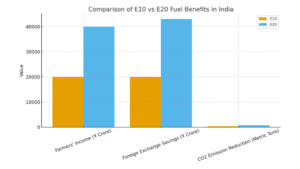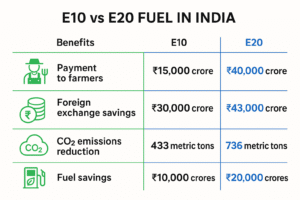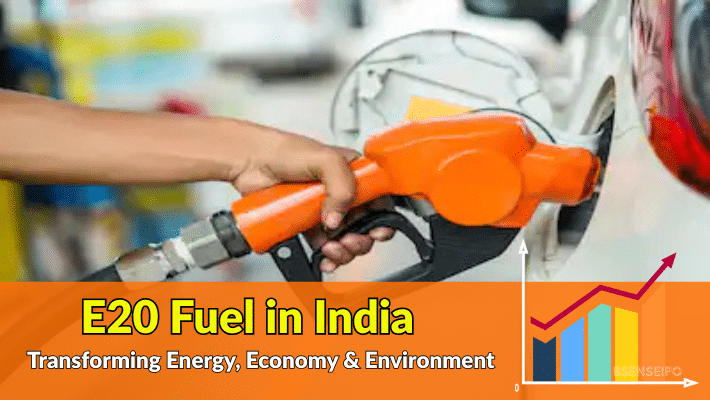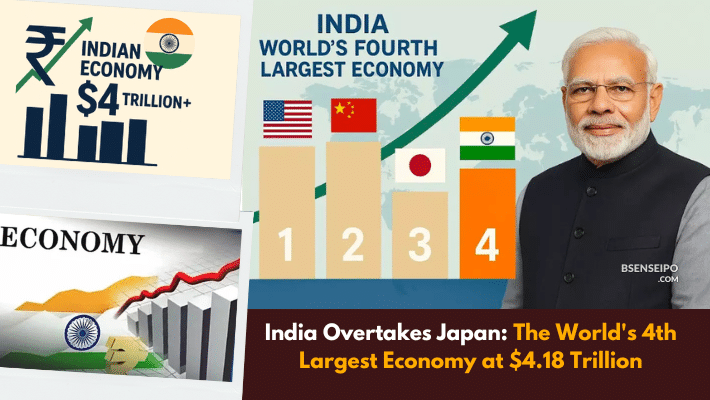E20 Fuel in India: How Ethanol Blending is Saving Crores, Empowering Farmers, and Cutting Emissions
E20 Fuel in India: India’s shift to 20% ethanol blending fuels sustainable growth, economic savings, and environmental progress.
What is E20 Fuel?
E20 fuel is a blend of 20% ethanol and 80% petrol. Ethanol is a biofuel derived mainly from sugarcane, maize, and agricultural residues. India’s E20 journey began with small ethanol blending levels (around 5%) and has now scaled up to 20%. The initiative is part of the government’s long-term vision to cut oil imports, support farmers, and curb carbon emissions.
The E20 Journey: From 5% to 20% Blending
- In the early 2000s, ethanol blending started at just 5%.
- Over the years, government policies, incentives, and blending mandates increased ethanol production.
- By 2025, the target is full-scale 20% blending (E20) nationwide.
This gradual shift has required massive investment in ethanol distilleries, supply chains, and vehicle calibration.
Comparison chart showing the benefits of E10 vs E20 fuel in India

Economic Impact: Farmers and Foreign Exchange
Payment of Rs. 40,000 Crore to Farmers
- Farmers have already received over ₹40,000 crore as direct payment for ethanol supplied to oil marketing companies.
- This provides a stable income source for sugarcane growers and reduces their dependence on volatile sugar markets.
Foreign Exchange Savings of Rs. 43,000 Crore
- India spends a huge amount on importing crude oil.
- With 20% ethanol blending, the country is projected to save ₹43,000 crore annually in foreign exchange outflow.
- This strengthens India’s energy security and reduces vulnerability to global oil price fluctuations.
Environmental Benefits of E20
CO2 Emission Reduction
- The use of E20 is expected to reduce 736 metric tons of CO2 emissions annually.
- Ethanol is a renewable and cleaner-burning fuel, which improves air quality and helps India meet its climate commitments.
Cleaner Cities, Healthier Lives
- Lower emissions will particularly benefit urban areas struggling with vehicular pollution.
- Reduced particulate matter and carbon monoxide improve public health.
Automotive Adaptation: Vehicle Calibration and Compatibility
Calibration of New Vehicles
- From 1 April, vehicle manufacturers will calibrate new vehicles to ensure they run efficiently on E20 fuel.
- This involves changes in engine tuning, fuel sensors, and exhaust systems to optimize performance.
Older Vehicles and E20
- Vehicles already on the road before E20 adoption can still run on blended petrol without major issues.
- However, performance and fuel efficiency may vary slightly in older engines not designed for ethanol-rich blends.
E10 vs E20 Fuel In India

Challenges Ahead
Despite the positives, a few challenges exist:
- Ensuring sufficient ethanol production capacity.
- Preventing excessive water use in sugarcane cultivation.
- Balancing food vs. fuel debate when diverting crops for ethanol.
- Nationwide distribution and storage of ethanol-blended fuels.
The Road Ahead: India’s Green Fuel Future
E20 is more than just a fuel policy—it is a multi-dimensional reform impacting agriculture, environment, industry, and energy security. By 2025, India aims to be fully E20-compliant, marking a new era in sustainable transportation.




